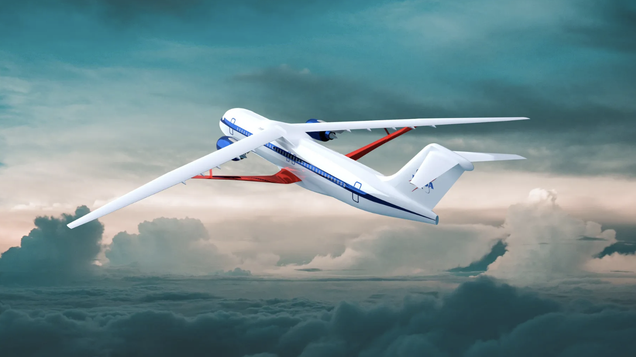NASA Unveils Transonic Truss-Winged Aircraft: A New Era of Aviation
NASA has recently unveiled its latest X-plane, a transonic truss-winged aircraft that could revolutionize the aviation industry. This new design is expected to be seen in airports around the world in the next decade, and it is set to change the way we think about flying.
What is a Transonic Truss-Winged Aircraft?
A transonic truss-winged aircraft is a new type of airplane that has been designed to fly at high speeds while maintaining stability and efficiency. The truss-winged design is unique in that it uses a series of interconnected struts and braces to support the wings, rather than the traditional solid wing structure. This design allows for greater flexibility and strength, which translates into a more efficient and stable flight.
The Benefits of a Transonic Truss-Winged Aircraft
The benefits of a transonic truss-winged aircraft are numerous. First and foremost, this new design allows for greater speed and efficiency. The truss-winged design reduces drag, which means that the aircraft can fly faster and use less fuel. This translates into lower operating costs, which is a major benefit for airlines.
Another benefit of the transonic truss-winged aircraft is its stability. The interconnected struts and braces provide greater strength and flexibility, which means that the aircraft can handle turbulence and other weather conditions more effectively. This translates into a smoother and more comfortable flight for passengers.
Finally, the truss-winged design also allows for greater cargo capacity. The increased strength and flexibility of the wings means that the aircraft can carry more weight without sacrificing speed or efficiency. This is a major benefit for airlines that need to transport large amounts of cargo quickly and efficiently.
The Future of Aviation
The unveiling of the transonic truss-winged aircraft marks a new era in aviation. This new design has the potential to revolutionize the way we think about flying, and it could pave the way for even more advanced aircraft in the future.
One of the most exciting aspects of this new design is its potential for supersonic flight. While the transonic truss-winged aircraft is not currently capable of supersonic speeds, NASA is already working on a new design that could take us even faster. This new design, known as the X-59 QueSST, is expected to be capable of supersonic flight while still maintaining the efficiency and stability of the truss-winged design.
Conclusion
The unveiling of the transonic truss-winged aircraft is a major milestone in aviation history. This new design has the potential to change the way we think about flying, and it could pave the way for even more advanced aircraft in the future. With its increased speed, efficiency, and cargo capacity, the transonic truss-winged aircraft is poised to become a major player in the aviation industry in the coming years. As NASA continues to develop new and innovative designs, we can expect to see even more exciting developments in the world of aviation.


